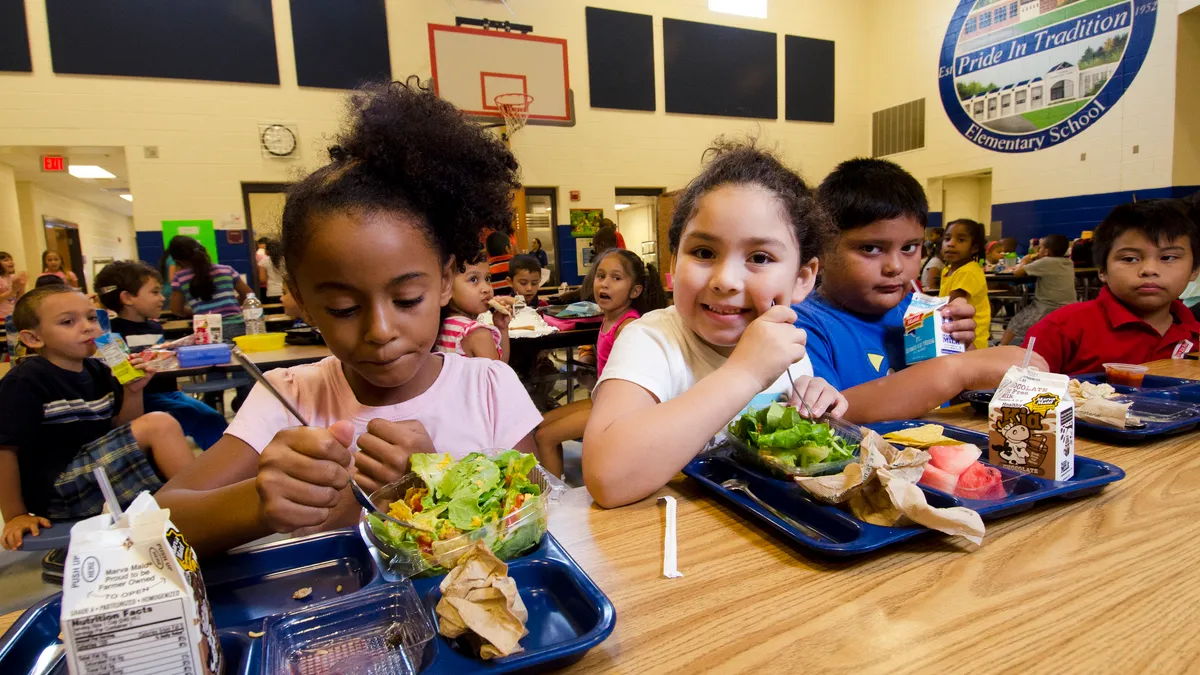Hunger does not take the summer off.
The 30.3 million students that rely on free and reduced-price meals during the school year are at risk of going hungry when summer vacation begins. While these students also qualify for summer meal programs, only about 10% of them participate, according to the U.S. Department of Agriculture.
Last year, nearly 2.9 million children participated in a summer lunch program, according to a Food Research and Action Center (FRAC) report released today. The number represents 171,000 fewer children participating in July 2018 versus July 2017. This is the third consecutive year that summer feeding numbers fell, the report states.
“The Summer Nutrition Programs help fill the hunger gap that exists for many families when the school year ends,” Clarissa Hayes, one of the report’s authors, said in an email. “Summer meal sites frequently serve healthy meals alongside educational and enrichment programming, which together help combat summertime food insecurity, weight gain and learning loss for children.”
Creative solutions to summer hunger
Districts are bridging the gap by providing mobile food trucks that bring summer food to low-income neighborhoods, park-style picnics at elementary schools and even bus passes to get students to and from places serving hot, healthy meals.
Another battle, however, is playing out at the national level where laws and funding are decided.
Advocates of summer meals are hopeful that the Summer Meals Act, which is currently being considered by Congress, will help provide funds for these programs. The bill would streamline rules to make it easier for sponsors to donate. It would also lower the participation threshold from 50% density of those who qualify for free and reduced-price lunches to 40%, making summer food services available in more areas.
An additional bill, the Stop Child Summer Hunger Act of 2019, would allow for funds to be distributed to qualifying families so they could purchase food during the summer months in areas where summer food service is lacking. USDA launched a similar program in 2011, but this year is funding it in only two states (Michigan and Wisconsin) and two tribes (the Chickasaw Nation and the Inter Tribal Council of Arizona), according to the report.
“Summer programs provide an important platform for summer meals, and there simply are not enough affordable summer enrichment programs available for low-income families to participate in,” Hayes said. “Increased investments in summer programs at the federal, state and local levels would ensure that low-income children have access to the summer learning opportunities and the summer meals they need."
Meals increase, sites decrease
The report also finds that while the number of summer meal program sponsors increased, the number of sites decreased. To ease the strain, many districts get creative when it comes to sites and meal delivery.
For example, Fairfax County Public Schools in Virginia is providing picnic-style summer lunches for students through its Food for Every Child To Eat During Summer program. The picnic sites are dispersed at elementary schools across the county. All residents are encouraged to participate in the program, which is funded by the USDA. There is no cost to children 18 years of age and younger, and there are low-cost adult meals available for purchase.
Also at the picnic sites are information booths that feature local businesses, youth groups, health organizations and activities that are geared toward improving the well being of Fairfax County residents.
The program has grown in popularity and last year served over 200,000 breakfast and lunch meals, said John Torre, the district's communication director. He added that without proper nutrition during the summer months, students may be at greater risk for learning loss.
More of these innovative models are needed, said Leslie Hall Hossfeld, dean of the College of Behavioral, Social and Health Sciences at Clemson University in South Carolina.
“These summer food programs have been under-utilized in the past, but are growing in participation,” she said. “They are particularly important for low-income and food-insecure kids because school is often the primary place of food during the school year.”
Hossfeld, who co-authored a book on food Insecurity in the U.S., emphasized the importance of mobile food trucks to get meals to food-insecure children in rural areas. She highlighted several additional programs that get food to students.
In Kalispell, Montana, the Kalispell School District Summer Meal Program features a mobile meal program for students 18 and under who typically rely on free and reduced-priced meals during the school year. The school district purchased a former ice cream truck with the help of a grant from Montana No Kid Hungry and retrofitted it to serve meals in six locations around the county. In addition to food, the program provides fun activities for children, such as baseball and Zumba classes.
In another Montana system, the Browning School District’s concessions truck was converted into a mobile food truck that delivers meals to rural areas at four stops each day. Prior to implementing the food truck program, hungry students either had to skip the meals or walk up to two miles to get meals.
Meanwhile, the Huntsville City Schools in Alabama issues free bus passes for students 18 and under so that youth can ride public transportation to summer food sites. The district also runs school buses that take students to and from the sites.
Now, across the nation, FRAC's goal is that summer meal programs serve 40 children for every 100 participating in school lunch programs, the report says. The authors note that if states had reached that goal during the 2017-18 school year, 5 million more children would have received meals each day and in July 2018 alone, states would have collected an extra $425 million in child nutrition funds.




















